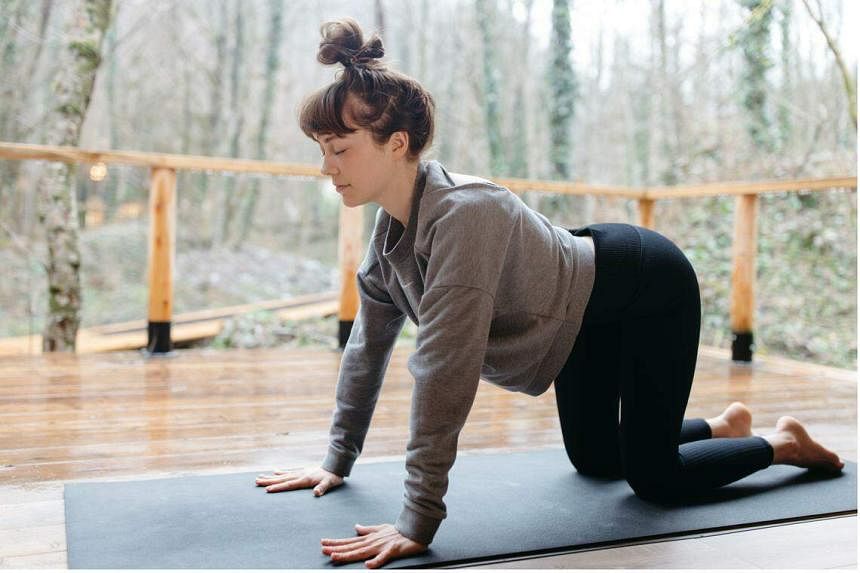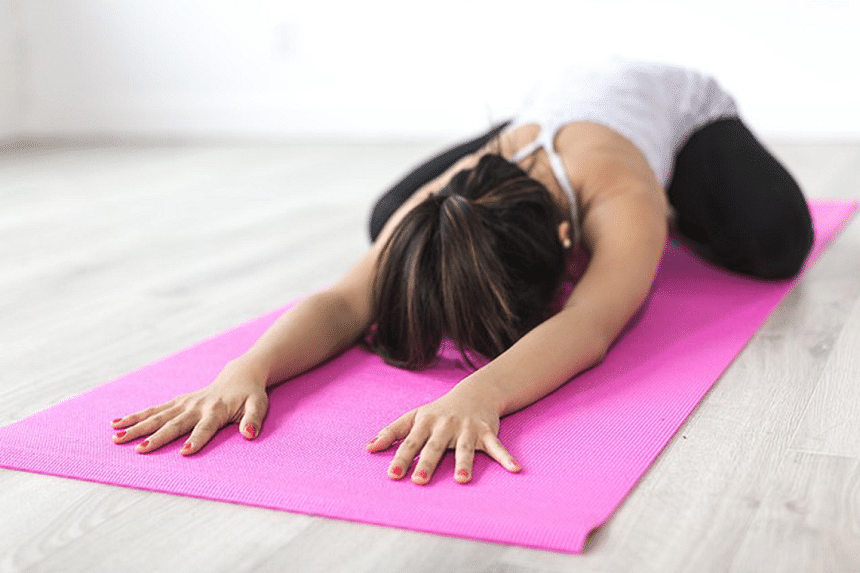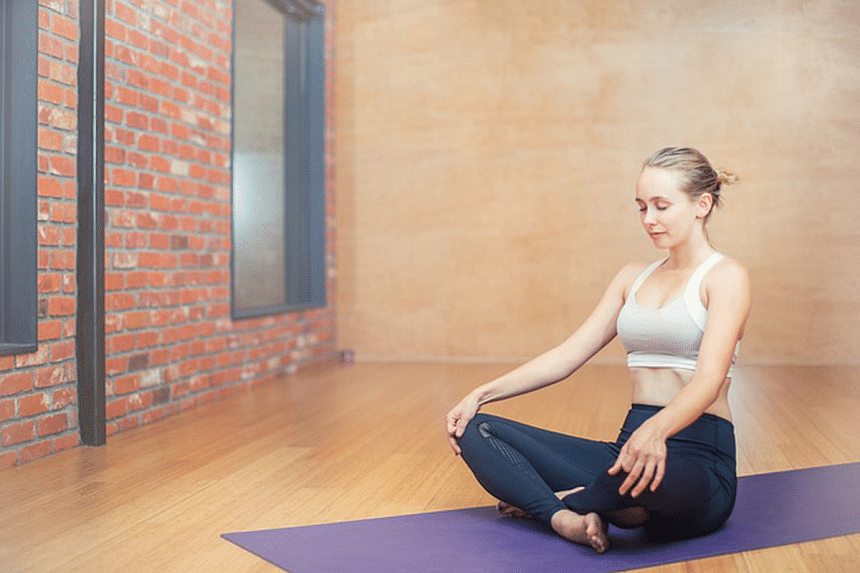NEW YORK – The last thing many people want to do when they wake up is exercise.
But if you are not in the mood for a run or a trip to the gym, yoga is a good way to get moving, and you can do it in as little as five minutes.
Yoga can help “to wake up your body and get it ready for the day”, said Dr Neha Gothe, director of the Exercise Psychology Lab at the University of Illinois Urbana-Champaign.
The right poses can stretch the major muscle groups and warm up the joints, while slow breathing promotes focus and can reduce stress and anxiety. No equipment or sweating is required.
If possible, start your morning yoga routine right after you wake up – and ideally before you reach for your phone, said certified yoga instructor and neuroscientist Laura Schmalzl at the Southern California University of Health Sciences.
Begin with slow, gentle movements. Listen to how your body feels, releasing any poses that cause discomfort.
As you hold positions and move through sequences, try “box” breathing, suggests Dr Natalie Nevins, a family medicine physician and assistant dean at the Western University of Health Sciences.
Inhale for around four seconds, then hold your breath for four seconds, exhale for four seconds and hold your breath again for four seconds before repeating the cycle.
If you have a heart condition or are uncomfortable holding your breath, Dr Nevins recommends a simple series of five-second inhales, each immediately followed by a five-second exhale.
Here is a yoga routine recommended by experts to get your day going.
Knees-to-chest: Start by lying on your back and hugging your knees to your chest. You should feel a gentle stretch in the spine. Breathe in and out through the stretch.
Half cobra: Release your legs and roll onto your chest, allowing your forehead or cheek to rest on the floor. Rest your forearms and place your palms on the ground, directly under your shoulders, while keeping your bent elbows tight against your sides.
Then gently push away from the floor, lifting your chest and forehead. Feel your spine gently stretch as you continue to slowly breathe in through your nose and out through your mouth. Stay here for three breaths.
Alternating cat-cow: This pose is useful to encourage spine mobility and flexibility. Rise to a kneeling tabletop position, keeping your hands shoulder-width apart and your knees hip-distance apart directly under your hips.

On the inhale, arch your back into a cow pose, easing your belly towards the floor, and bringing your head and chest upwards, so you are gazing towards the sky as you inhale. Then exhale, releasing your breath and pulling your belly up and in and rounding your back into a cat pose.
Alternate between these two poses, feeling your spine and neck stretch in both directions. Feel free to gently move your hips, shoulders or head in a circular motion, breathing slowly as you do.
Child’s pose: This is a gentle pose that stretches the spine. It is also a pose you can return to if you need to rest or reset.

From the tabletop position, inhale and touch your big toes together behind you. Then sit on your heels, letting your knees open wide to create space beneath you. Or keep your knees together, if that feels more comfortable.
As you exhale, shift your hips back and your upper body forward, lowering your torso to rest between or on top of your thighs. If your knees are together and you feel a pinch in your hips, spread your knees apart. Stretch your arms out in front of you, reaching as far forward as feels good, and then rest your forearms on the floor.
Let gravity pull you deeper into the pose. You may feel a stretch in your spine, thighs, arms and buttocks. Stay in this pose for five breaths.
Reclining twist: Start by lying down on your back and bringing your knees up towards your chest.
Hug your knees and place your right hand on your left knee. Let your left arm lie flat, extended on the floor beside you. Twisting from your core, exhale and gently guide your bent legs to fall together to the right side of your body.
Bring your knees towards the floor until you feel a stretch in your back and hips. Then, turn your head to look towards your left hand. On an inhale, come back to the centre before switching to the other side.
You may feel a gentle stretching in your hips, buttocks and back and an opening in your shoulders and chest. If you wish to target the upper spine or you want a gentler stretch, you can lie on your right side with your legs bent and resting on top of each other. Then, slowly twist your upper body to the left. After that, stretch the other side.
Spinal flex: This gentle back stretch is especially good for people who spend all day sitting at a desk. Sit on the floor in a cross-legged position and place your hands on your ankles or knees. While inhaling, gently arch your back and lift your chest and chin forward and up. Relax and, while exhaling, round your spine, bending forward slightly and tucking your chin towards your chest. Repeat this sequence five times.
Upward salute: Stand with your feet hip distance apart. Feel your feet connecting with the floor and shift your hips forward slightly, engaging your core. Slowly raise your arms overhead and in line with your ears, shoulder distance apart. Turn your palms towards each other and, if you can, let them touch. Bring your gaze up to your hands and feel a stretch in your neck and arms.
Raise yourself up onto your toes. Find your centre as you take several breaths. When you are ready, slowly lower your arms and the rest of your body to release the pose. Take a few moments to shake out your arms and legs. NYTIMES

